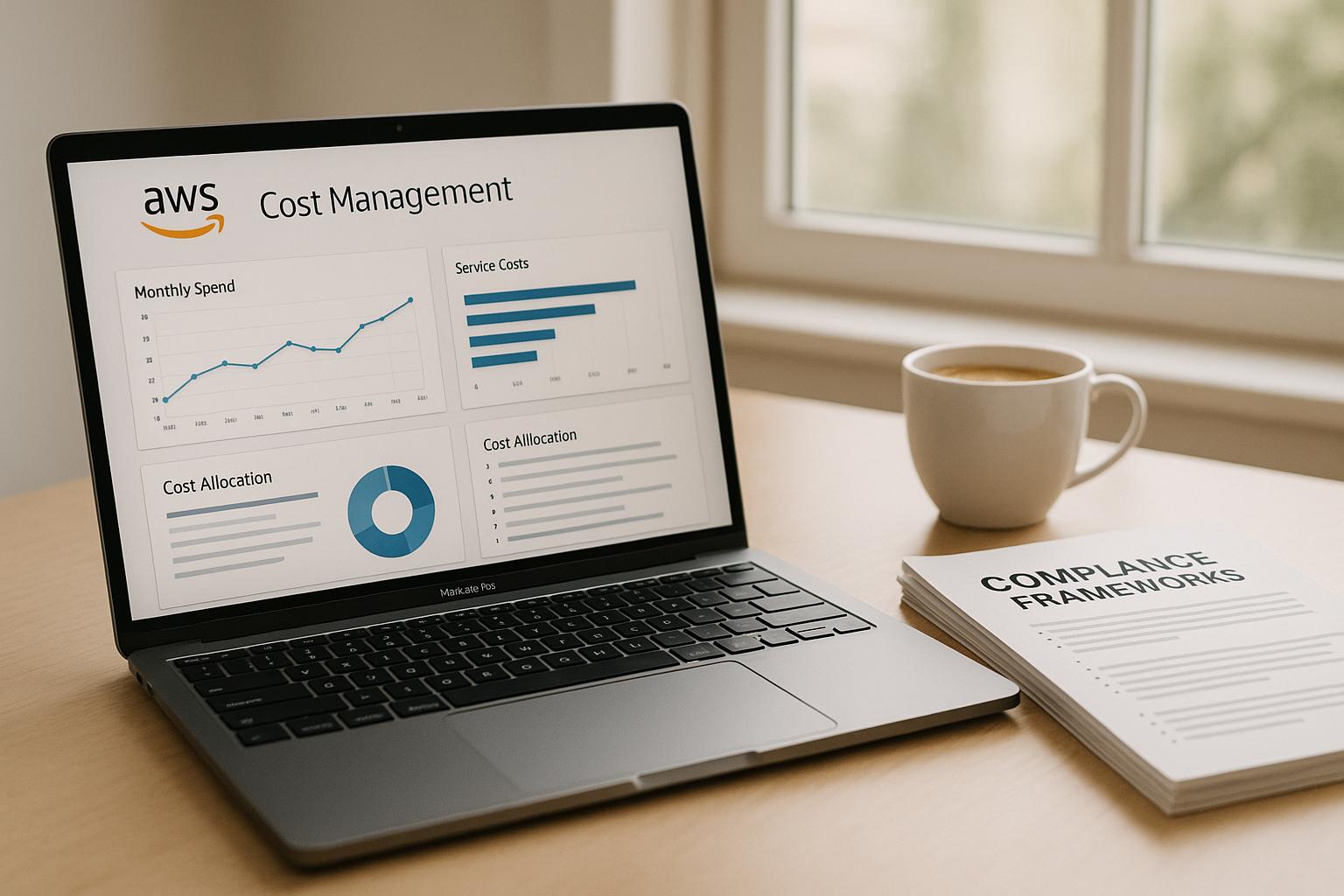AWS cost compliance frameworks help businesses manage cloud expenses while meeting regulatory and governance standards. They combine financial controls, monitoring tools, and automation to ensure spending aligns with both internal policies and external regulations. For UK organisations, these frameworks are particularly crucial due to stringent rules from regulators like the FCA and GDPR requirements.
Key Points:
- What It Is: AWS cost compliance involves policies, controls, and tools to manage cloud costs while adhering to regulations.
- Why It Matters: Non-compliance can lead to fines (e.g., GDPR penalties up to £17.5m), reputational damage, and operational disruptions.
- Key Tools: AWS Billing, Cost Explorer, Config, and Cost Anomaly Detection enable monitoring, budgeting, and compliance enforcement.
- How It Works: Frameworks focus on governance policies, monitoring processes, and automated controls to ensure accountability and reduce risks.
- UK Focus: Tailored for industries like finance and healthcare, addressing local regulatory needs and operational resilience.
AWS cost compliance isn't just about cutting expenses - it ensures organisations meet legal requirements while optimising cloud usage.
AWS re:Inforce 2022 - Deep dive into compliance and auditing at scale (GRC402)
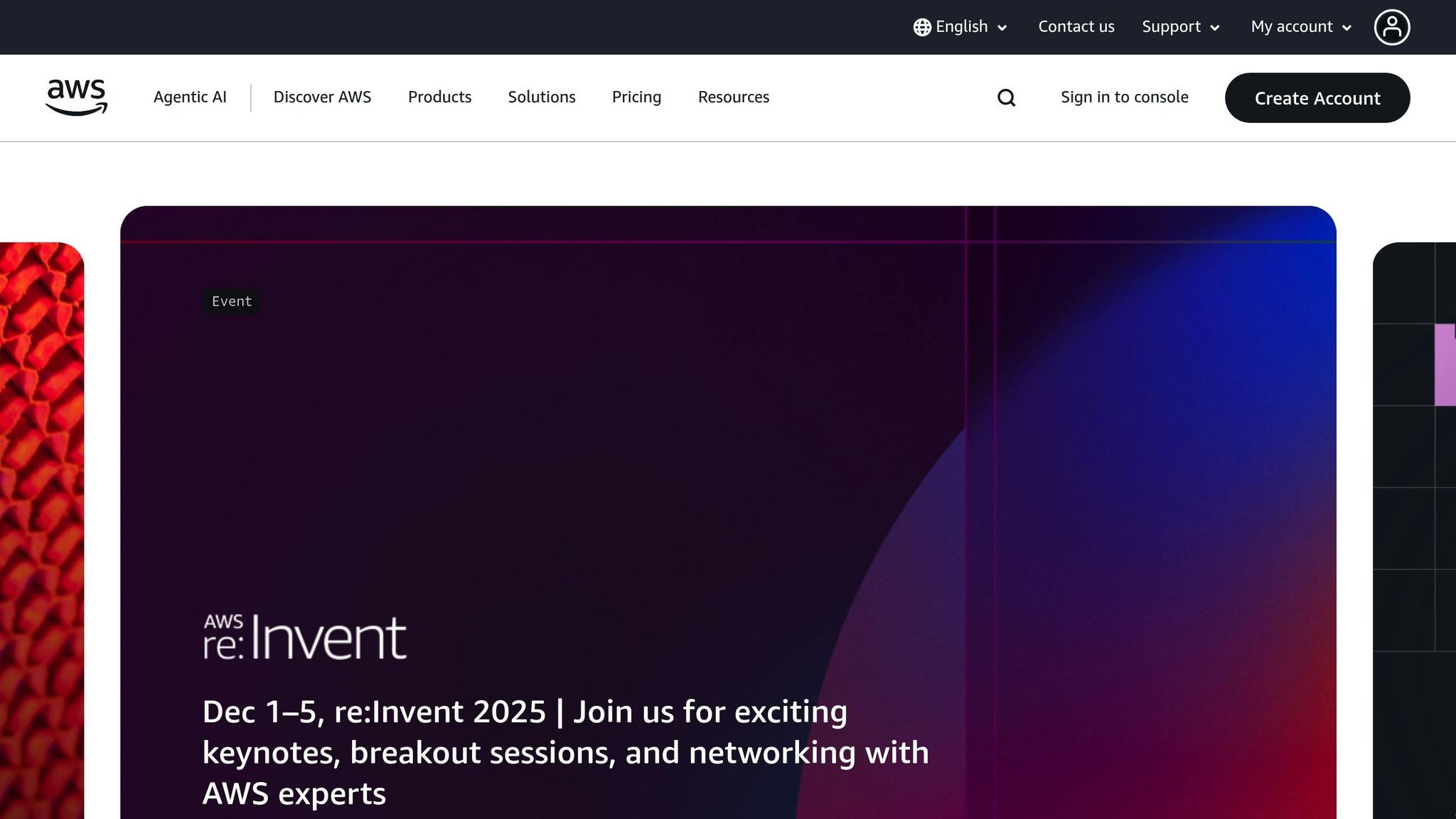
Core Elements of AWS Cost Compliance Frameworks
Building a reliable AWS cost compliance framework revolves around three key components: cost governance policies, implementation and monitoring processes, and automated controls. Together, these elements help organisations manage spending, ensure accountability, and adhere to UK regulatory standards.
Cost Governance Policies
At the heart of effective cost management are well-defined governance policies. These policies set clear guidelines for budgeting, resource allocation, and compliance, all tailored to meet local regulatory requirements. According to Flexera's 2023 report, enterprises risk wasting 27% of their cloud budgets in 2024, amounting to a staggering US$160 billion [7]. This underscores the importance of robust governance.
Policies should outline spending limits for departments, projects, and environments, while also specifying which teams have the authority to provision resources. This prevents unauthorised costs and ensures compliance with UK financial regulations. For organisations in regulated sectors, policies must also address any additional industry-specific rules.
Tagging strategies play a crucial role in governance. A consistent tagging framework allows organisations to track costs across departments, projects, and compliance categories. This level of detail not only supports accurate cost allocation but also simplifies regulatory reporting. AWS, for example, meets 143 security standards and compliance certifications, including PCI-DSS, GDPR, and HIPAA/HITECH [1].
Implementation and Monitoring Processes
Turning policies into action requires structured implementation and monitoring processes. These ensure that cost management aligns with both organisational goals and regulatory requirements through regular audits, detailed reporting, and defined escalation protocols.
Monthly audits are essential for UK organisations to review spending patterns, identify anomalies, and address unauthorised resource usage. This proactive approach helps organisations detect potential violations early.
Reporting mechanisms provide transparency across the organisation. Executive dashboards can highlight overall spending trends and compliance status, while technical teams benefit from granular data on resource usage and areas for optimisation.
Escalation paths ensure swift responses to compliance issues. When budgets are exceeded or violations occur, predefined procedures outline who must act, what actions to take, and the resolution timeframe. Collaboration across finance, operations, and development teams - an approach championed by FinOps [6] - further enhances decision-making by leveraging shared cost data.
These processes lay the groundwork for automated controls, which provide continuous enforcement and minimise manual intervention.
Automated Controls for Compliance
Automated controls are the final piece of the puzzle, offering real-time enforcement to prevent overspending and maintain compliance. These controls grow with the organisation while reducing the risk of human error.
Budget alerts act as an early warning system. AWS Budgets enables organisations to set cost and usage thresholds, sending notifications when spending reaches 50%, 75%, or 90% of the budget [7].
Automated tagging ensures governance policies are consistently applied. By requiring metadata - like project codes and cost centres - on all resources, organisations can streamline cost allocation and reduce manual work.
Role-based access controls (RBAC) prevent unauthorised provisioning of resources. Using IAM policies, access to costly services or sensitive data is restricted based on job roles and regulatory requirements, which is particularly critical under GDPR.
Cost anomaly detection leverages machine learning to flag unusual spending patterns. AWS Cost Anomaly Detection, a free service, continuously monitors usage and alerts teams to unexpected changes that may signal compliance issues or security risks [7].
Real-world success stories highlight the power of automated controls. For instance, Fortra, a security firm, automated security control management across over 200 AWS accounts in 15 regions. This reduced the time to address security issues from 72 hours to mere minutes and achieved 100% accuracy in applying security controls, thanks to tagging-based exception handling [9].
When combined, these automated controls provide a robust compliance framework. Properly configured, they offer continuous monitoring, instant alerts, and automated remediation, all while scaling seamlessly with business growth and ensuring adherence to regulatory standards.
AWS Tools and Services for Cost Compliance
AWS offers a range of native tools designed to help organisations enforce cost compliance and manage cloud spending effectively. These tools work seamlessly with your existing AWS infrastructure, providing a strong foundation for both regulatory compliance and cost efficiency.
AWS's approach to cost management revolves around three key principles: visibility, control, and optimisation. With a wide array of security and compliance certifications [1], AWS emphasises that security and compliance are shared responsibilities [1]. These tools, in combination with automated controls, create a comprehensive ecosystem for managing costs and compliance.
AWS Billing and Cost Management
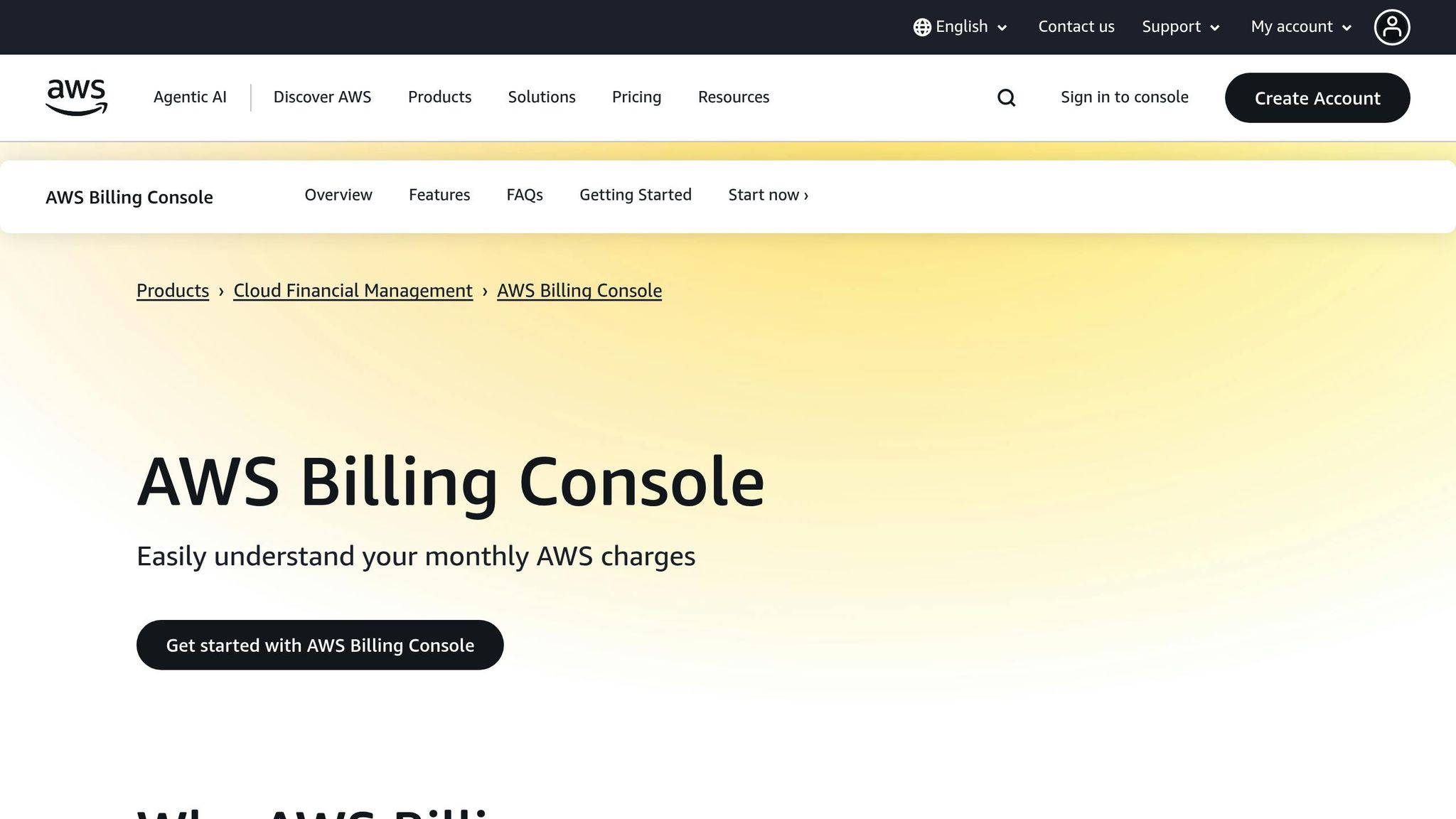
At the heart of AWS's cost management suite is AWS Billing and Cost Management. This tool acts as a central hub for all cost-related activities, offering detailed billing reports, cost analysis, and budgeting tools. With cost allocation tags, organisations can categorise expenses by project, department, or specific compliance requirements, making it easier to track and report costs accurately. Historical billing data is another valuable feature, enabling finance teams to analyse spending trends and plan future budgets more effectively.
AWS Cost Explorer and Budgets
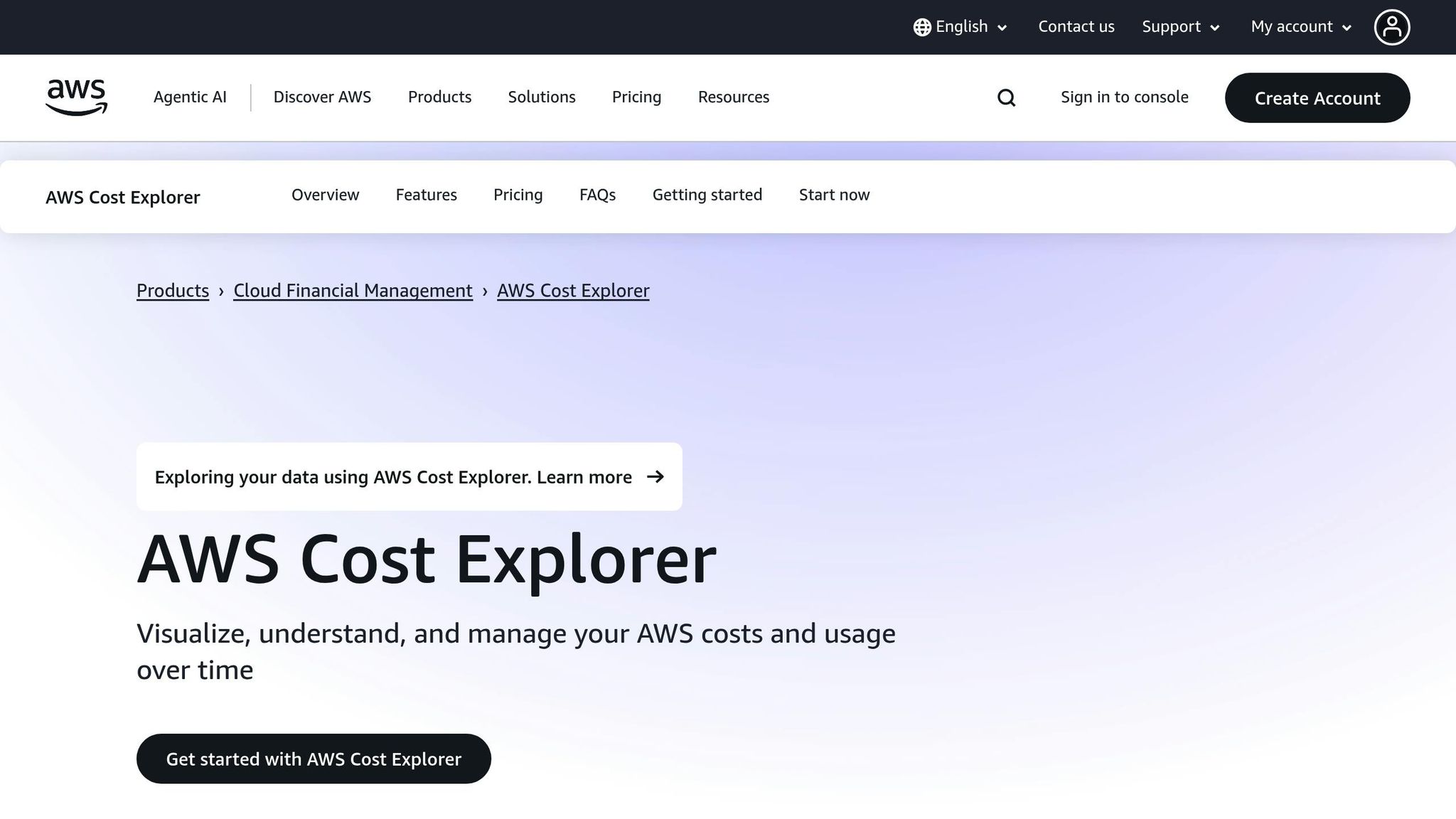
AWS Cost Explorer provides powerful visualisation and analysis tools to help organisations understand their spending patterns over time. Its machine learning-powered forecasting identifies cost drivers, enabling better budget planning and financial decision-making.
Complementing Cost Explorer, AWS Budgets allows organisations to proactively manage costs by setting custom spending limits and receiving automated alerts. Budget data is refreshed up to three times daily, offering near real-time insights into spending. Budgets can track various cost types - such as blended, unblended, amortised, and net amortised costs - and notify users when thresholds are exceeded. The first 62 budget alerts each month are free, with additional alerts costing roughly £0.08 each [10]. Additionally, custom actions can be configured to respond automatically when budget thresholds are breached, ensuring operational continuity while preventing cost overruns.
AWS Config and Cost Anomaly Detection
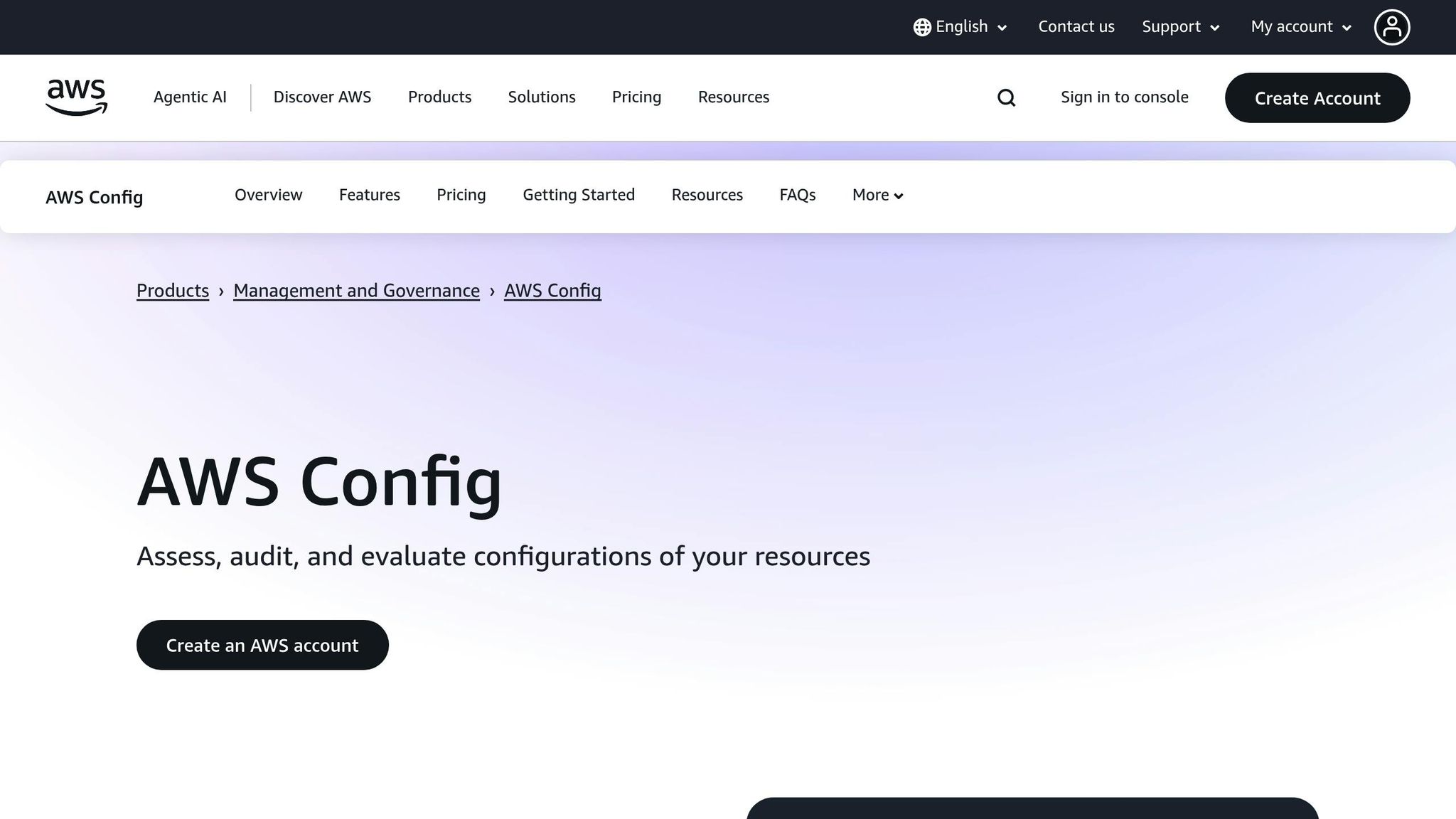
AWS Config plays a crucial role in maintaining compliance by continuously monitoring and assessing resource configurations. It flags any changes that deviate from organisational policies, helping to avoid unexpected costs and ensuring resources remain in line with established guidelines.
AWS Cost Anomaly Detection is another invaluable tool, monitoring usage and identifying anomalies in spending. It allows organisations to set up custom monitors based on services, accounts, or cost allocation tags. When anomalies are detected, the service provides detailed root cause analysis, enabling teams to pinpoint the exact resources contributing to unexpected costs. Alerts are highly customisable, with thresholds and notification preferences that minimise false positives by learning from historical spending patterns. When genuine anomalies are found, actionable recommendations are provided, based on AWS best practices.
A Unified Approach to Cost Compliance
Together, these tools form a well-rounded cost compliance ecosystem. Cost Explorer offers historical insights, Budgets provides proactive monitoring, and Config and Cost Anomaly Detection ensure continuous compliance and quick issue resolution. For businesses in the UK, especially those in regulated industries, these tools deliver the audit trails and documentation needed to meet financial controls and regulatory requirements. By integrating these services, organisations can maintain cost discipline while achieving their operational goals, setting the stage for effective AWS cost management.
How to Implement AWS Cost Compliance
Implementing AWS cost compliance involves more than just understanding cost governance and automated controls. For UK businesses, it’s about adopting practical strategies that balance financial oversight with operational efficiency. This process hinges on three key areas: smart cost allocation, embedding compliance into workflows, and leveraging external expertise.
Creating a Cost Allocation Strategy
Effective cost allocation is the foundation of AWS cost compliance, offering clear visibility and control over cloud spending. Research indicates that organisations with robust cost allocation practices are almost twice as likely to implement strategies that reduce cloud expenditure[12].
One straightforward method is account-based segmentation. By using separate AWS accounts, businesses can isolate costs while also addressing billing, security, and operational needs. This approach is particularly useful for UK organisations with multiple departments or subsidiaries, where financial separation is essential[12].
For more granular tracking, resource tagging is invaluable. Tags allow businesses to categorise costs by project, client, or compliance requirements[11]. The key to successful tagging lies in keeping things simple and transparent while using existing data sources effectively. By identifying critical cost drivers and enforcing strict tagging policies, UK businesses can ensure consistency and prevent untagged resources from being created.
AWS Cost Categories can take this a step further by grouping accounts and tags within an AWS Organisation[11]. For single-account setups, businesses can add dimensions like services or regions to achieve the granularity needed for precise cost tracking.
Once a clear cost allocation strategy is in place, the next step is weaving compliance directly into DevOps workflows.
Adding Compliance to DevOps Workflows
Integrating cost compliance into DevOps workflows shifts the focus from reactive fixes to proactive management. The idea of compliance by design
means building guardrails into the development process, ensuring compliance is addressed from the outset rather than as an afterthought[13]. For example, bringing compliance leads into sprint planning ensures audit requirements are considered early on.
Automating compliance checks is another game-changer. Tools like Policy as Code (PaC) allow teams to embed compliance validation into pull request workflows, enabling continuous and rapid checks without disrupting development speed[13]. A UK HealthTech company recently adopted this approach by working with DevOps specialists to automate infrastructure and compliance processes. Using tools like Terraform and GitHub Actions, they ensured all changes were version-controlled and traceable, with automated checks blocking non-compliant updates.
Infrastructure as Code (IaC) further strengthens this process by maintaining consistency in deployments. Treating infrastructure configurations like application code allows teams to validate and review changes, creating the audit trails compliance teams need while keeping up with the pace of DevOps.
Working with External Experts
For many UK businesses, especially those with limited internal resources, external expertise can make all the difference in achieving AWS cost compliance. Implementing a comprehensive compliance framework often requires specialised knowledge that internal teams may lack. This is where AWS Consulting Partners come in, offering expertise in building, optimising, and securing cloud environments while meeting compliance standards[14].
Take Hokstad Consulting, for instance. This firm focuses on cloud cost engineering and DevOps transformation, helping UK businesses cut cloud costs by 30–50% while establishing robust compliance frameworks. Their No Savings, No Fee
model ties their success directly to client outcomes, ensuring a practical and results-driven approach.
Engaging external consultants brings several advantages. Their deep understanding of AWS tools and UK-specific regulatory requirements, combined with experience across various industries, allows them to implement best practices efficiently. This can be especially valuable for businesses in regulated sectors with strict compliance needs.
When deciding to bring in external help, consider the complexity of your AWS environment, your team’s capabilities, and your specific compliance requirements. Organisations with multi-account structures or limited in-house AWS expertise often benefit most from external guidance. Look for consultants with proven track records, relevant AWS certifications, and experience navigating UK regulatory frameworks. A good partnership should also focus on knowledge transfer, empowering your internal teams to maintain and evolve the compliance framework over time.
Additionally, external experts often provide ongoing support through regular audits, continuous monitoring, and optimisation efforts. By combining internal knowledge with external expertise, UK businesses can accelerate implementation while building a strong foundation for long-term compliance.
Need help optimizing your cloud costs?
Get expert advice on how to reduce your cloud expenses without sacrificing performance.
AWS Cost Compliance Best Practices for UK Businesses
After setting up an AWS cost compliance framework, keeping it effective requires a thoughtful approach tailored to the needs of UK businesses. The best strategies combine automation, regular reviews, and alignment with regulations to create a compliance system that not only controls costs but also supports business growth.
Automating Compliance Processes
Automation is a game-changer for AWS cost compliance. It reduces the need for manual effort and enhances accuracy. For UK businesses, automation is especially important for maintaining data privacy and meeting compliance standards [15].
How effective is automation? Research highlights that automation can cut manual compliance tasks by up to 97%, reducing processes that might take 30 minutes to just 1 minute [16]. This level of efficiency allows businesses to uphold strict compliance requirements without overloading their teams.
Tools like AWS Config and Systems Manager can automate monitoring and management tasks across your AWS environment [8][15][18]. When integrated with existing systems, these tools make compliance part of the regular development process rather than an extra chore.
Automating compliance checks boosts accuracy, efficiency, and security, transforming compliance management into a streamlined workflow.- Beinex [15]
The secret to successful automation lies in seamless integration. PwC’s approach is a great example - automated systems pull data from various sources like security scanners and CI/CD pipelines to assess compliance against set controls [16].
PwC assists organisations in rethinking how their compliance processes can work more effectively within existing systems...introducing automation where it adds the most value.- Najaad Dayib, Application Security Manager, PwC US [16]
UK businesses can take automation further by combining AWS Config with AWS Security Hub. This pairing enables continuous monitoring and even automated fixes when issues arise [17].
Regular Reviews and Continuous Improvement
While automation handles much of the heavy lifting, regular reviews ensure your compliance framework stays effective as regulations and business needs evolve. These reviews help identify gaps and adapt to new challenges.
AWS tools like Config, CloudWatch, and CloudTrail provide real-time tracking and auditing, giving businesses visibility into their compliance status and areas that need improvement [20]. These tools make it easier to stay on top of compliance without getting bogged down in administrative work.
The AWS Well-Architected Framework offers a structured way to evaluate your architecture and ensure it aligns with compliance goals [5]. Regular reviews using this framework help businesses adapt to changing requirements while keeping operations efficient.
For more detailed compliance reporting, third-party tools can complement AWS services. These solutions provide insights tailored to specific regulations like GDPR, ISO, SOC 2, HIPAA, PCI DSS, and NIST [20]. They add an extra layer of analysis and reporting capabilities.
AWS also offers a resilience lifecycle framework to guide continuous improvement in compliance practices [5]. This framework focuses on regular assessments and updates to keep compliance processes aligned with both business goals and regulatory standards.
UK businesses that treat compliance reviews as strategic opportunities often uncover ways to optimise costs and improve operations. These reviews not only ensure regulatory adherence but also help businesses align their AWS environments with broader objectives.
Meeting UK Regulatory Standards
Maintaining compliance isn’t just about cost control - it’s also about meeting the UK’s specific regulatory requirements. For businesses operating in AWS, this includes adhering to GDPR, the Data Protection Act 2018, and other industry-specific standards. AWS provides over 500 features and services designed to help businesses meet these needs [4].
Failing to comply with GDPR, for example, can result in fines of up to £17.5 million or 4% of annual global turnover [19]. AWS supports GDPR compliance through tools like Identity and Access Management (IAM) for access control, AWS Config for monitoring, and Key Management Service (KMS) for encryption [4].
Financial institutions face additional challenges when using AWS. UK regulators allow cloud services but require businesses to meet legal and regulatory standards [2]. This includes assessing the importance of workloads, reviewing the AWS Shared Responsibility Model, and notifying regulators about material outsourcing agreements [2].
For regulated sectors, tools like AWS Security Hub and CloudTrail are invaluable. They provide the audit trails and monitoring capabilities needed to meet UK regulatory demands while reducing the workload on internal teams [4].
AWS Security Assurance Services offers tailored support for UK businesses, including audit playbooks and hands-on guidance. This service helps organisations implement compliance frameworks that align with both AWS best practices and UK regulations [5].
Understanding the shared responsibility model is essential for meeting compliance goals. As AWS explains: Security and Compliance is a shared responsibility between AWS and the customer.
[1] This means businesses must clearly understand their role in maintaining compliance while leveraging AWS services effectively.
For those needing additional support, specialists like Hokstad Consulting provide tailored solutions. Their cloud cost engineering approach helps UK businesses reduce costs by 30-50% while establishing compliance frameworks that meet regulatory standards. Their No Savings, No Fee
model ensures businesses see measurable value alongside compliance improvements.
Conclusion
AWS cost compliance frameworks are transforming how UK businesses approach cloud governance. Instead of relying on reactive fixes, these frameworks promote proactive, measurable improvements across security, operational efficiency, and financial management. They also bring added advantages in cost-performance, making them a valuable asset for businesses navigating the complexities of cloud management.
Key Takeaways
The benefits of AWS cost compliance frameworks go well beyond just managing expenses. They enhance security, ensure regulatory compliance, and optimise costs, all while delivering a secure, scalable, and efficient cloud management system. By aligning compliance with operational flexibility, these frameworks empower businesses to scale their cloud infrastructure while reducing risks through automated compliance measures[3].
In fact, with 85% of UK respondents anticipating changes to their compliance strategies due to laws like the EU AI Act, DORA, and the NIS2 Directive[22], adopting robust frameworks is becoming essential for managing the increasingly intricate regulatory environment.
It’s also crucial to differentiate between AWS compliance and governance. AWS compliance focuses on meeting external regulations like GDPR, while AWS governance deals with internal policies for managing cloud resources effectively. Both are equally important for UK organisations, especially in regulated industries, to maintain secure and efficient operations.
Next Steps for UK Businesses
For UK organisations, embedding compliance into AWS strategies is no longer optional - it’s a necessity. Start by evaluating your current AWS expenditure to pinpoint areas for optimisation. This process should include mapping your existing security measures to meet new regulatory demands, ensuring a seamless compliance effort while avoiding unnecessary costs[22].
Automation is another vital step. Enable AWS CloudTrail across all regions, set up organisation-wide trails, and integrate with CloudWatch Logs for comprehensive monitoring[23]. Define clear log retention policies that meet compliance requirements without inflating storage costs, and encrypt logs using AWS KMS for stronger security.
As regulations evolve, developing a robust AI compliance policy should also be a priority. Consider undergoing an AI audit or obtaining certifications to stay ahead of emerging standards[22].
For tailored guidance, consulting experts like Hokstad Consulting can help businesses build compliance frameworks that not only meet regulatory requirements but also optimise cloud costs.
AWS cost compliance frameworks are powerful tools for adapting to changing regulations. As Sam Rea, lead architect at 6point6, points out:
Achieving and maintaining compliance across borders and against multiple standards can be tough. Compliance shouldn't be a blocker to your business and it's likely that you're more compliant with other standards than you realise.[21]
The key to success lies in viewing compliance as an opportunity rather than a limitation. AWS provides the tools and services to establish strong frameworks, but the true value emerges when these capabilities are fully integrated into your business strategy. Begin with an AWS spend review, implement automated compliance controls, and regularly reassess your approach to stay aligned with evolving regulations.
FAQs
How can businesses in the UK ensure their AWS cost compliance frameworks align with GDPR and FCA requirements?
To align AWS cost compliance frameworks with GDPR and FCA requirements, UK businesses need to prioritise robust data governance and adhere to applicable legal standards. This involves leveraging AWS tools specifically designed for compliance, like data processing agreements tailored for GDPR and security protocols that meet FCA outsourcing guidelines.
It's equally important to carry out regular audits, keep detailed and transparent documentation, and update frameworks to stay in step with evolving UK regulations. By focusing on these steps, businesses can manage costs efficiently while maintaining compliance with essential regulatory standards.
What are the advantages of using automated controls in AWS cost compliance frameworks, and how do they reduce the need for manual effort?
Automated Controls in AWS Cost Compliance Frameworks
Automated controls in AWS cost compliance frameworks bring a host of benefits, including greater efficiency, less manual effort, and improved consistency. By automating tasks like policy enforcement, compliance checks, and issue resolution, businesses can maintain ongoing adherence to cost policies while cutting down on the likelihood of human error.
These controls streamline repetitive processes, reducing the need for manual intervention. This not only helps lower operational costs but also frees up teams to focus on more strategic, high-impact activities. The result? A time-saving, dependable, and scalable way to manage AWS costs and compliance.
Why should organisations integrate cost compliance into DevOps workflows, and how can they do it effectively?
Integrating cost compliance into DevOps workflows is a smart move for organisations looking to keep cloud expenses in check, minimise financial risks, and stay on top of regulatory requirements. By weaving cost controls directly into the development process, companies can sidestep unexpected overspending while keeping operations running smoothly.
Here’s how organisations can make this happen:
- Automate compliance checks to spot and fix cost-related issues early in the pipeline.
- Adopt governance-as-code to apply policies consistently across all environments.
- Set up continuous monitoring to keep an eye on usage and spending in real time.
These steps not only simplify workflows but also ensure cloud operations align with business objectives, balancing cost management with compliance needs.
